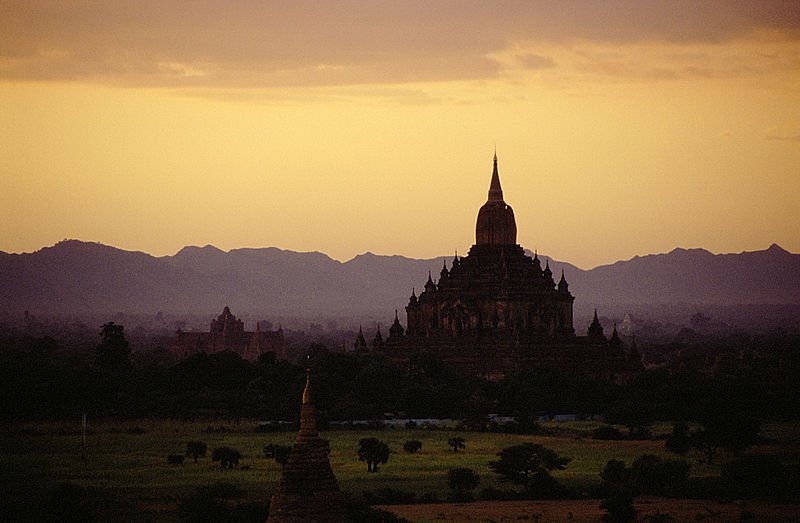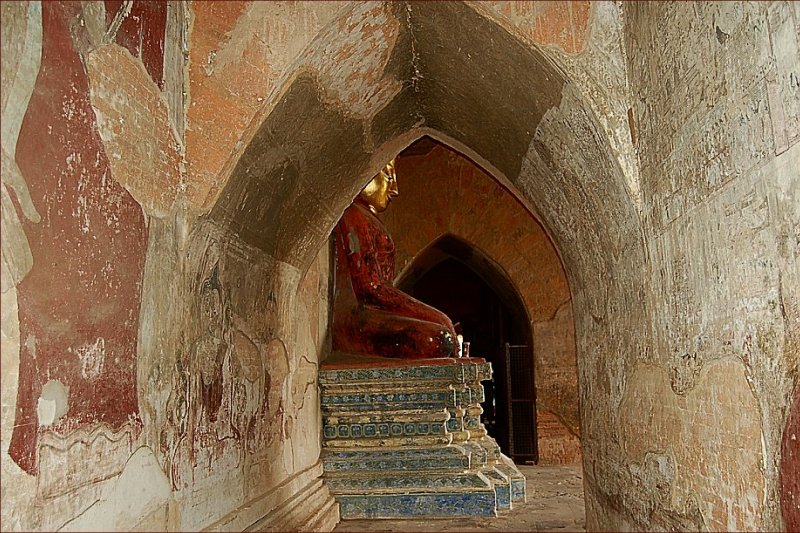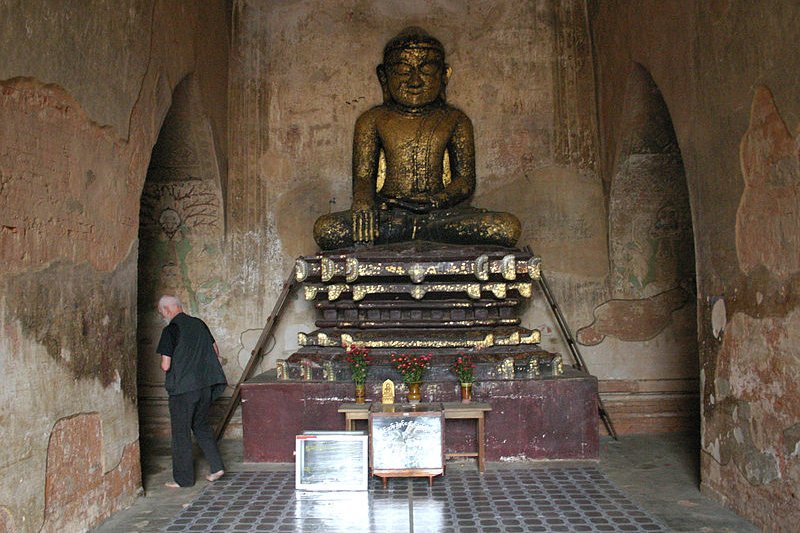 Sulamani Temple, Bagan
Sulamani Temple, BaganSource: https://commons.wikimedia.org/wiki/File:Bagan,-Burma2.jpg
Author: Corto Maltese 1999

Author: Corto Maltese 1999

Sulamani Temple is one of the large temples in Bagan, Myanmar. In terms of size, it is within the same league as the Thatbyinnyu Temple and Gawdawpalin Temple. Built in 1183, it is one of the last large temples to be built in Bagan. The temple is also known in its local name as Sulamani Guphaya and Sulamani Phato.
Sulamani Temple is located near Dhammayangyi Temple, and both can be visited together. The construction style of Sulamani is similar to that of Thatbyinnyu, Gawdawpalin and Htilominlo, in that it comprises a solid core encircled by a corridor. Entances at each cardinal point form passages intersecting with the corridor.
 The interior of Sulamani Temple
The interior of Sulamani TempleSource: https://commons.wikimedia.org/wiki/File:BAGAN-INTERIOR-DE-LA-PAGODA-DE-LOS-FRESCOS.jpg
Author: ESPARTOSA

Author: ESPARTOSA

Sulamani Temple is noted for its glazed ceramic inserts. These can be seen at the base as well as at the upper terraces. These glazed inserts will glisten when the sun shines on them.
From the time of its construction until today, Sulamani Temple had undergone numerous refurbishment. One of the earliest took place in the 14th century, after the capital relocated from Bagan to Inwa. During this period intrusive paintings, added as a form of merit making, were often painted over the walls. Most of the original painting from the 12th century is gone, except for those on the main vaulted ceiling. About 40 percent of this survives.
One of the most recent major refurbishment was carried out between 1927 and 1929, when the main Buddha statue and smaller ones were repaired.
Bibliography
Ancient Pagan by Donal M. Stadtner and Michael Freeman A Buddha statue at Sulamani Temple
A Buddha statue at Sulamani TempleSource: https://commons.wikimedia.org/wiki/File:Sulamani-Bagan-Myanmar-32-gje.jpg
Author: Gerd Eichmann

Author: Gerd Eichmann

 Latest updates on Penang Travel Tips
Latest updates on Penang Travel Tips
 Map of Roads in Penang
Map of Roads in Penang
Looking for information on Penang? Use this Map of Roads in Penang to zoom in on information about Penang, brought to you road by road.
Copyright © 2003-2025 Timothy Tye. All Rights Reserved.

 Go Back
Go Back